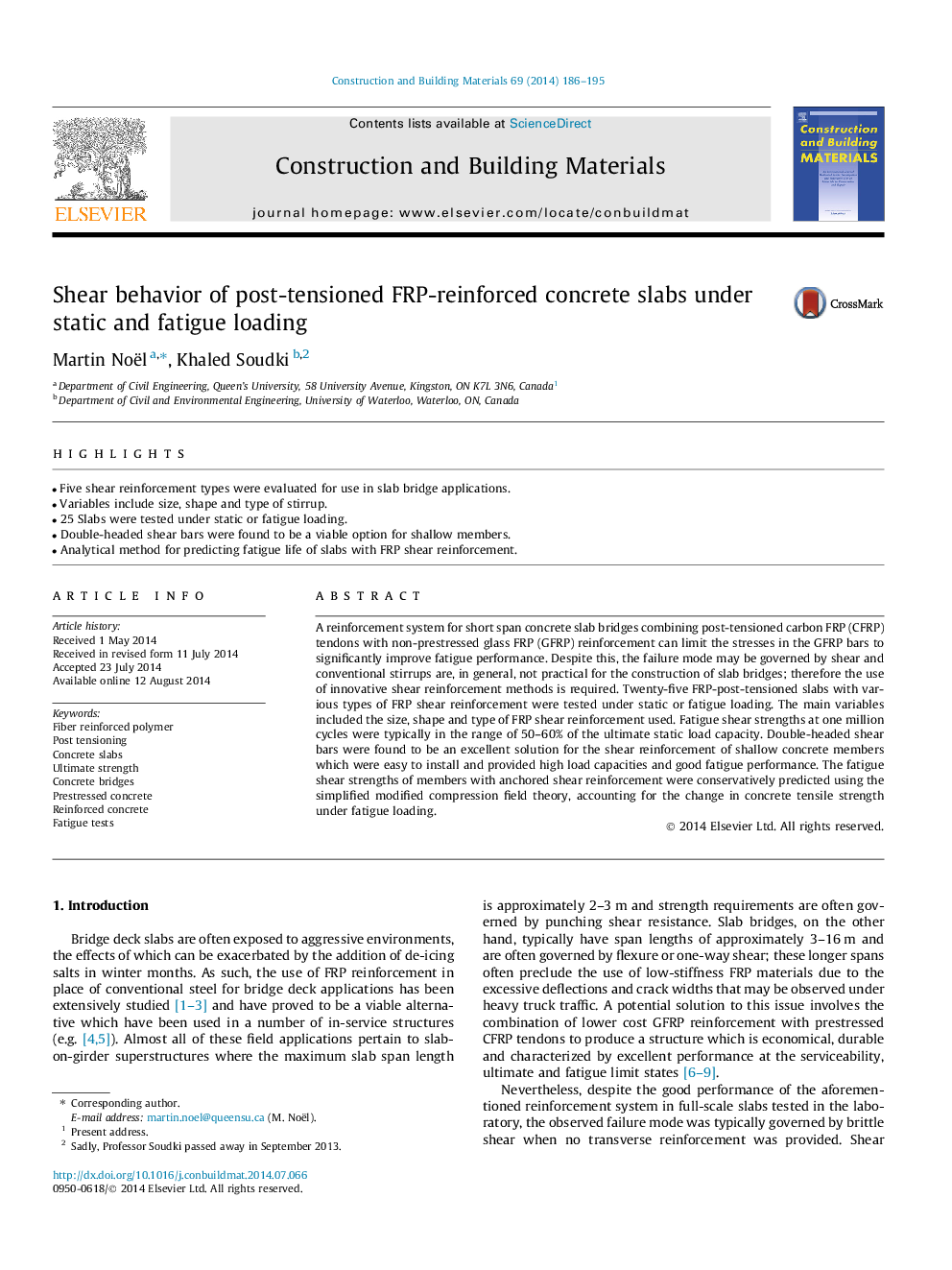| Article ID | Journal | Published Year | Pages | File Type |
|---|---|---|---|---|
| 257408 | Construction and Building Materials | 2014 | 10 Pages |
•Five shear reinforcement types were evaluated for use in slab bridge applications.•Variables include size, shape and type of stirrup.•25 Slabs were tested under static or fatigue loading.•Double-headed shear bars were found to be a viable option for shallow members.•Analytical method for predicting fatigue life of slabs with FRP shear reinforcement.
A reinforcement system for short span concrete slab bridges combining post-tensioned carbon FRP (CFRP) tendons with non-prestressed glass FRP (GFRP) reinforcement can limit the stresses in the GFRP bars to significantly improve fatigue performance. Despite this, the failure mode may be governed by shear and conventional stirrups are, in general, not practical for the construction of slab bridges; therefore the use of innovative shear reinforcement methods is required. Twenty-five FRP-post-tensioned slabs with various types of FRP shear reinforcement were tested under static or fatigue loading. The main variables included the size, shape and type of FRP shear reinforcement used. Fatigue shear strengths at one million cycles were typically in the range of 50–60% of the ultimate static load capacity. Double-headed shear bars were found to be an excellent solution for the shear reinforcement of shallow concrete members which were easy to install and provided high load capacities and good fatigue performance. The fatigue shear strengths of members with anchored shear reinforcement were conservatively predicted using the simplified modified compression field theory, accounting for the change in concrete tensile strength under fatigue loading.
